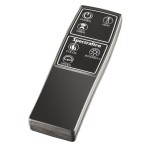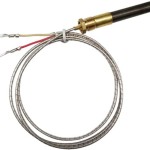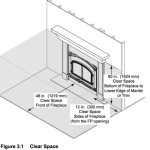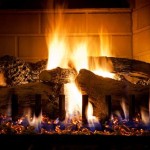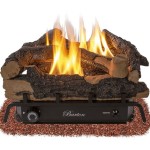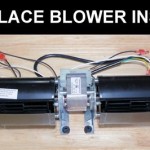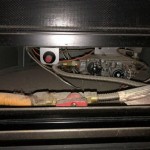How To Repair a Fireplace Chimney
A fireplace chimney, while a seemingly robust structure, is continuously exposed to the elements and the corrosive byproducts of combustion. Time, weather, and usage inevitably lead to wear and tear. Regular inspection and timely repairs are crucial not only for the longevity of the chimney but, more importantly, for the safety of the occupants of the building. A damaged chimney can lead to carbon monoxide poisoning, structural collapse, and even house fires. Ignoring minor issues can escalate them into major, costly, and potentially dangerous problems. This article provides a comprehensive guide to identifying common chimney issues and outlining the necessary steps for repairs.
Assessing Chimney Damage
Before embarking on any repair work, a thorough inspection is paramount. This inspection should encompass both the exterior and interior of the chimney. Begin with a visual assessment from the ground, utilizing binoculars if necessary, to look for obvious signs of damage such as cracked or missing bricks, crumbling mortar, or a leaning structure. Notice any vegetation growing on the chimney, as this can indicate moisture retention and potential structural weakness. Check the condition of the chimney cap and crown, ensuring they are intact and functioning properly to prevent water intrusion.
Moving to the interior, examine the firebox for cracks, especially around the joints and edges. Use a flashlight to inspect the flue liner for any signs of cracking, spalling (flaking or crumbling), or missing sections. These are critical indicators of internal damage that can significantly compromise the chimney's ability to vent properly. Check for creosote buildup, a flammable byproduct of incomplete combustion, which can pose a significant fire hazard. The National Fire Protection Association (NFPA) recommends that chimneys be swept annually to remove creosote and ensure proper ventilation. A professional chimney sweep can perform this service and provide a detailed assessment of the chimney's condition.
Pay close attention to signs of water damage, such as staining on the ceiling around the chimney, dampness in the attic near the chimney, or efflorescence (a white, powdery deposit) on the brickwork. Water intrusion is a major contributor to chimney deterioration, as it can freeze and thaw within the brick and mortar, causing them to crack and crumble. Addressing water intrusion promptly is essential to prevent further damage.
Repairing Mortar Joints: Tuckpointing
One of the most common chimney repair needs is the deterioration of mortar joints. Over time, the mortar between the bricks can crack, crumble, and fall out, leaving the chimney vulnerable to water damage and structural instability. Tuckpointing, the process of removing and replacing damaged mortar, is a effective solution for addressing this issue. The process involves carefully removing the deteriorated mortar to a depth of approximately twice its width, using a chisel and hammer or a specialized power tool. It is crucial to avoid damaging the surrounding bricks during this process.
Once the old mortar has been removed, the joints should be thoroughly cleaned with a brush and rinsed with water to remove any dust and debris. This ensures proper adhesion of the new mortar. The new mortar should be mixed according to the manufacturer's instructions, ensuring it is of a consistency that is workable but not too wet. A pointing trowel is then used to carefully press the mortar into the joints, filling them completely and ensuring a tight seal. The mortar should be slightly overfilled initially, allowing for shrinkage as it dries.
After the mortar has partially set, typically within a few hours, it should be tooled to match the existing mortar profile. This can be achieved using a variety of tools, such as a concave jointer, a V-jointer, or a brick jointer. The tooling process compacts the mortar and creates a watertight seal, while also improving the aesthetic appearance of the chimney. Excess mortar should be carefully removed from the brick faces using a brush and water. The newly tuckpointed area should be kept damp for several days to allow the mortar to cure properly. This can be achieved by misting the area with water several times a day, especially in hot or dry weather. Proper curing is essential for the mortar to achieve its full strength and durability.
Addressing Flue Liner Damage
The flue liner is a critical component of the chimney system, responsible for containing the combustion gases and channeling them safely to the outside. A damaged flue liner can allow these gases to leak into the building, posing a serious health hazard. It can also allow heat to transfer to combustible materials, increasing the risk of a house fire. Therefore, any damage to the flue liner should be addressed promptly and effectively.
Small cracks in a clay tile flue liner can sometimes be repaired using a flue liner sealant, a specialized product designed to fill cracks and create a smooth, airtight surface. However, this is only a temporary solution for minor damage. For more significant damage, such as large cracks, missing sections, or spalling, a more extensive repair is necessary.
One option is to reline the chimney using a flexible stainless steel liner. This involves inserting a stainless steel liner into the existing flue and connecting it to the firebox and the chimney cap. Stainless steel liners are durable, corrosion-resistant, and can be used with a variety of fuels. They also provide a smooth, consistent surface that improves the chimney's draft. The installation of a stainless steel liner is a complex process that typically requires professional expertise.
Another option is to use a cast-in-place liner, a process that involves pouring a specialized concrete mixture into the existing flue to create a new, seamless liner. This method is particularly suitable for chimneys with irregular shapes or significant damage. The cast-in-place liner provides a strong, durable, and airtight barrier that effectively protects the chimney structure.
Before undertaking any flue liner repair, it is essential to consult with a qualified chimney professional to determine the best course of action. The choice of repair method will depend on the severity of the damage, the type of fuel being used, and the overall condition of the chimney.
Repairing the Chimney Crown
The chimney crown is the concrete or mortar slab that covers the top of the chimney, protecting the brickwork from water intrusion. A cracked or damaged crown can allow water to seep into the chimney structure, leading to significant damage over time. Repairing the crown promptly is essential to prevent further deterioration.
Small cracks in the crown can often be repaired using a crown sealant, a flexible, waterproof material that is applied to the surface of the crown to seal the cracks. The sealant should be applied in multiple thin coats to ensure complete coverage. Before applying the sealant, the crown should be thoroughly cleaned and any loose debris removed.
For more significant damage, such as large cracks, crumbling sections, or missing pieces, the crown may need to be repaired or replaced. If the existing crown is relatively sound but has some damage, it can be resurfaced with a new layer of mortar. This involves applying a bonding agent to the existing crown and then troweling on a layer of mortar to create a smooth, waterproof surface. The new mortar should be properly cured to ensure its durability.
In cases where the crown is severely damaged, it may need to be completely replaced. This involves removing the old crown and pouring a new one using concrete or mortar. A form is typically used to shape the new crown, and reinforcing steel may be added for extra strength. The new crown should be properly sloped to allow water to drain away from the chimney flue. The crown should also extend several inches beyond the edge of the chimney to protect the brickwork from water runoff.
When repairing or replacing a chimney crown, it is important to ensure that it is properly sealed to the chimney flue. This can be achieved by using a flexible sealant to create a watertight connection between the crown and the flue liner. This prevents water from seeping down between the crown and the flue, which can cause significant damage.

Chimney Lining Repair Systems Heatshield

Flue Repairs And Chimney Relining A 1 Pro

Fixr Com Chimney Repair Cost To Fix A

How To Fix Chimney Leaks Full Service

What Makes Up A Fireplace Chimney Dc Area Repair Service

Chimney Flue New Jersey

Fireplace Repair Rebuilding Company Chimney Masonry Service

How To Stop Fireplace Drafts Full Service Chimney

Chimney Crown Repair Cherry Hill Mason S Service

Custom Masonry Chimney Repair Fireplace Services Lucky Sully Sweep
Related Posts

